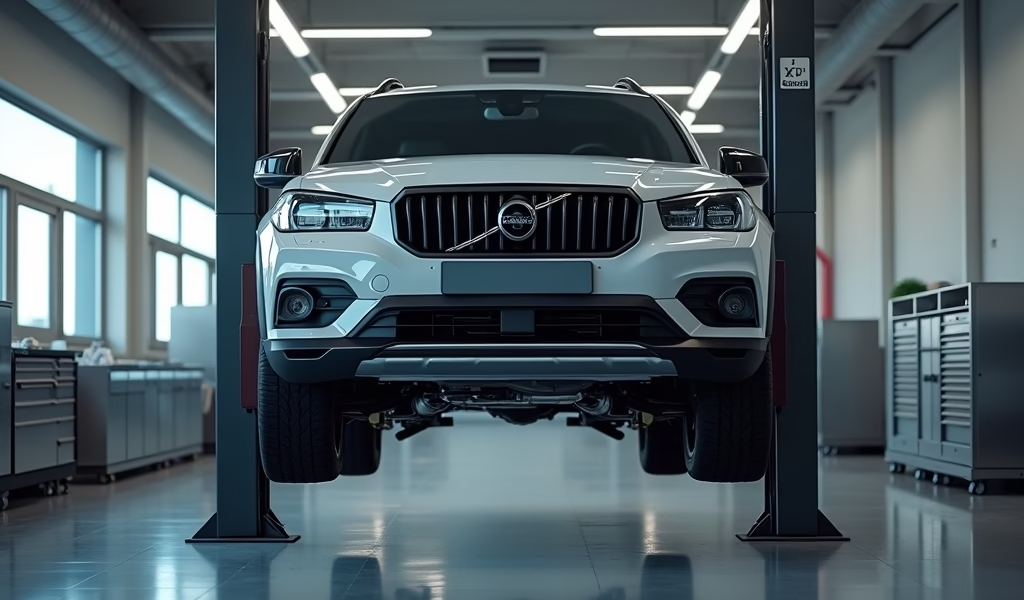Overview
This article outlines five essential maintenance practices for all-wheel drive vehicles: regular tire maintenance to prevent drivetrain damage, timely differential fluid changes, adopting proper driving habits, performing seasonal checks, and addressing warning signs promptly. Proper AWD maintenance not only extends vehicle longevity but also ensures optimal performance and safety while preventing costly repairs that could have been avoided through preventative care.
Table of Contents
- Introduction to All-Wheel Drive
- Tip 1: Regular Tire Maintenance Is Crucial
- Tip 2: Differential Fluid Changes
- Tip 3: Mind Your Driving Habits
- Tip 4: Seasonal Maintenance Checks
- Tip 5: Don’t Ignore Warning Signs
- Conclusion
- Frequently Asked Questions
Introduction to All-Wheel Drive
All-wheel drive systems have transformed how we navigate challenging road conditions. As a mechanic with 15 years of experience working with AWD vehicles, I’ve seen firsthand how proper maintenance can extend the life of these sophisticated systems—and how neglect can lead to costly repairs.
Unlike traditional two-wheel drive setups, all-wheel drive distributes power to all four wheels, offering superior traction on slippery roads, better handling during cornering, and improved stability in adverse conditions. But this added capability comes with specific maintenance needs that many owners overlook.
Whether you’ve just purchased your first AWD SUV or you’re a longtime enthusiast looking to better care for your vehicle, these five essential care tips will help you maximize performance and avoid unnecessary wear and tear. Let’s dive into what your AWD system needs to stay in peak condition.
Tip 1: Regular Tire Maintenance Is Crucial
When it comes to all-wheel drive vehicles, tire care isn’t just about avoiding flats—it’s fundamental to your entire drivetrain’s health. Uneven tire wear can cause serious damage to your AWD system, creating problems far more expensive than a set of new tires.
Unlike two-wheel drive vehicles, AWD systems connect all four wheels through complex differentials and transfer cases. This means differences in tire diameter—even slight ones—force some components to work harder than others. Over time, this leads to premature wear of expensive parts like center differentials.
Here’s what you need to do:
- Rotate your tires every 5,000-7,500 miles to ensure even wear patterns across all four tires
- Maintain consistent tire pressure according to manufacturer specifications (not the maximum on the sidewall)
- Replace tires in complete sets of four whenever possible, or at minimum, pairs on the same axle
- Ensure replacement tires match the original specifications for size, load rating, and speed rating
I once had a customer who replaced just two tires on his Subaru Outback. Within 8,000 miles, his center differential started making an ominous whining noise, resulting in a $2,200 repair that could have been avoided with a $400 set of matching tires.
According to tire industry experts, even a 1/4 inch difference in tire circumference can cause drivetrain damage in AWD vehicles. That small difference might not be visible to the naked eye, but your differential will certainly feel it.

Tip 2: Differential Fluid Changes
The heart of any all-wheel drive system lies in its differentials—those mechanical components that allow wheels to rotate at different speeds while still delivering power. Differential fluid is the lifeblood of these critical components, yet it’s one of the most commonly neglected maintenance items.
Unlike engine oil changes that trigger dashboard reminders, differential fluid services often fly under the radar. This oversight can be costly, as overheated or contaminated fluid accelerates wear on precision-machined gears and bearings.
For optimal AWD performance and longevity:
- Change front, rear, and center differential fluids every 30,000-60,000 miles (check your owner’s manual for exact intervals)
- Use manufacturer-recommended fluids—many AWD systems require specific synthetic formulations
- Consider more frequent changes if you regularly tow, drive in mountainous terrain, or experience extreme temperatures
- Listen for grinding, whining, or clunking from the differentials—these sounds indicate potential fluid breakdown
The differences between AWD and FWD systems mean AWD vehicles have additional fluid requirements. While a front-wheel-drive car might only need transmission fluid service, your AWD vehicle has at least two—and sometimes three—additional reservoirs requiring attention.
I recently worked on a Volvo XC90 with catastrophic differential failure. The owner had diligently changed the engine oil every 5,000 miles for seven years but had never serviced the differential fluids, resulting in metal shavings throughout the system and a $3,800 rebuild. A $150 fluid change would have prevented this entirely.
Research shows that regular differential fluid changes can extend drivetrain component life by up to 50% compared to vehicles that only receive service after problems develop.
Tip 3: Mind Your Driving Habits
How you drive significantly impacts your all-wheel drive system’s health and longevity. Certain driving habits can prematurely wear out AWD components, while others help preserve them for the long haul.
Many AWD systems weren’t designed for continuous high-stress operation. Systems like those found in crossover SUVs are engineered primarily for occasional low-traction situations, not constant off-road use or aggressive driving.
Smart driving practices for AWD vehicles include:
- Avoid excessive wheelspin on slippery surfaces—contrary to popular belief, spinning tires don’t improve traction and can damage differentials
- Allow your vehicle to warm up for 1-2 minutes in cold weather before driving aggressively
- Reduce speed when cornering on rough or uneven surfaces to minimize strain on the drivetrain
- Use appropriate drive modes if your vehicle offers them—many modern AWD vehicles have snow, rain, or off-road settings that optimize power distribution
Comparing FWD vs AWD driving techniques highlights important differences. FWD vehicles can often power through slippery conditions with momentum, while AWD systems work best with smooth, controlled inputs.
I once assisted a customer with repeated transfer case issues on his Audi Quattro. After discussing his driving habits, we discovered he frequently performed “launches” from stoplights, putting enormous strain on the AWD components—a behavior that contributed to three transfer case replacements in under 70,000 miles.
Being mindful of how you drive isn’t about babying your vehicle—it’s about understanding its design limitations and working within them. Your AWD system provides incredible capability when you need it, but it doesn’t benefit from being pushed to its limits during everyday driving.
Tip 4: Seasonal Maintenance Checks
As seasons change, so do the demands on your all-wheel drive system. Seasonal maintenance checks ensure your AWD vehicle is prepared for whatever conditions lie ahead, preventing avoidable breakdowns and extending component life.
Many AWD systems work hardest during winter months when traction is limited, making fall the perfect time for a comprehensive inspection. Similarly, spring provides an opportunity to address any issues that may have developed during winter’s harsh conditions.
Your seasonal AWD checklist should include:
- Inspect CV boots and axles for cracks, tears, or leaks that could allow contamination
- Check for differential and transfer case leaks, particularly after winter road salt exposure
- Test the AWD system’s engagement if your vehicle has a selectable system
- Examine underbody protection components for damage from winter road debris
- Verify tire tread depth and condition before extreme weather seasons
Beyond these basics, consider a professional inspection annually. Modern AWD systems often incorporate electronic components that require specialized diagnostic equipment to properly evaluate.
I worked with a customer whose Nissan Rogue developed a severe vibration every winter. For three years, she assumed it was normal for AWD vehicles until we discovered a cracked CV joint that was exacerbated by cold temperatures—a simple visual inspection could have identified this issue before it progressed.
According to Consumer Reports, preventative seasonal maintenance can reduce the likelihood of winter breakdowns by up to 70%. For AWD vehicles specifically, this preparation is even more critical given their complex drivetrains.

Tip 5: Don’t Ignore Warning Signs
Your all-wheel drive system communicates problems long before catastrophic failure occurs. Recognizing and addressing early warning signs can save thousands in repair costs and prevent being stranded in potentially dangerous conditions.
Unlike simpler drivetrains, AWD systems have numerous potential failure points—each with distinct symptoms. Learning to identify these warnings is perhaps the most valuable skill for maintaining your vehicle’s longevity.
Common AWD warning signs include:
- Unusual noises during cornering or when accelerating from a stop (grinding, clicking, or humming)
- Vibrations that change with vehicle speed or during acceleration
- Dashboard warning lights related to traction control, stability control, or AWD systems
- Difficulty maintaining straight-line stability, especially during acceleration
- Binding sensation when making tight turns at low speeds
When these symptoms appear, prompt diagnosis is crucial. Many AWD issues begin as minor, inexpensive repairs but quickly cascade into major system failures if ignored.
I recently diagnosed a Honda CR-V that had been making a subtle clicking noise for months. The owner had dismissed it as “normal AWD sounds,” but our inspection revealed a failing rear differential that had begun damaging the accompanying driveshaft—catching it earlier would have saved over $1,200 in additional repairs.
Even seemingly unrelated issues can impact your AWD system. For example, brake problems might indicate stuck calipers that create drag, forcing your AWD system to work harder and potentially overheat. Holistic vehicle care is essential for AWD longevity.
Conclusion
Maintaining your all-wheel drive system doesn’t need to be daunting or expensive. By following these five essential care tips—regular tire maintenance, scheduled differential fluid changes, mindful driving habits, seasonal checks, and prompt attention to warning signs—you’ll maximize your vehicle’s performance, safety, and longevity.
The sophisticated engineering behind modern AWD systems delivers remarkable capability, but this complexity requires informed care. Think of these maintenance practices as investments rather than expenses; each dollar spent on preventative maintenance typically saves many more in avoided repairs.
Remember that your owner’s manual remains the definitive guide for maintenance intervals specific to your vehicle model. Manufacturer recommendations may vary considerably between brands and even between different models from the same manufacturer.
Whether you’re navigating snowy mountain passes, wet coastal highways, or simply want the added security of all-wheel traction, proper care ensures your AWD system will be ready when you need it most. Your AWD vehicle represents both a significant financial investment and a crucial safety system for you and your passengers—it deserves attentive, knowledgeable care.
Frequently Asked Questions
Does all-wheel drive use more fuel than two-wheel drive?
Yes, AWD systems typically reduce fuel economy by 1-2 MPG compared to their two-wheel-drive counterparts. This occurs because AWD systems add weight and create additional mechanical resistance in the drivetrain.
Can I mix different tire brands on my AWD vehicle?
It’s strongly recommended to use identical tires on all four wheels of an AWD vehicle. Different brands, even in the same size, often have slightly different diameters and tread patterns that can stress AWD components.
How do I know if my AWD system is working properly?
Most modern AWD vehicles have dashboard indicators that illuminate when the system is engaged or if there’s a malfunction. You might also notice improved traction on slippery surfaces and stability during acceleration compared to two-wheel drive vehicles.
Is it safe to tow an AWD vehicle?
Many AWD vehicles require flatbed towing or special procedures to prevent drivetrain damage. Always consult your owner’s manual for specific towing instructions, as improper towing can cause expensive damage to differentials and transfer cases.
Do I need to use AWD-specific transmission fluid?
Many AWD vehicles require specific fluids for their transmissions, transfer cases, and differentials. Using incorrect fluids can cause premature wear, overheating, and potential system failure even if the fluid appears compatible.

